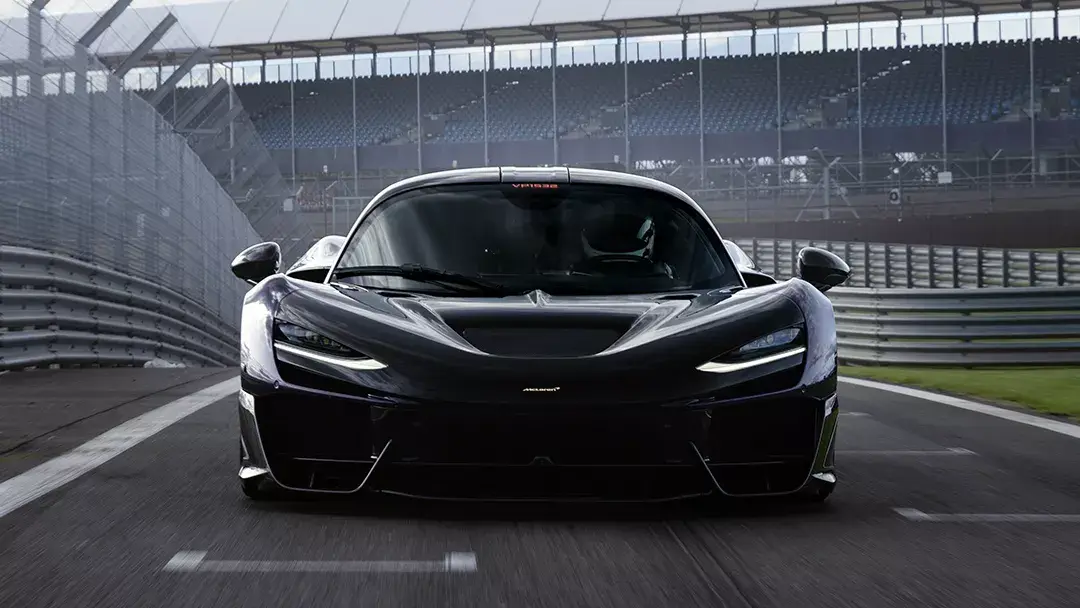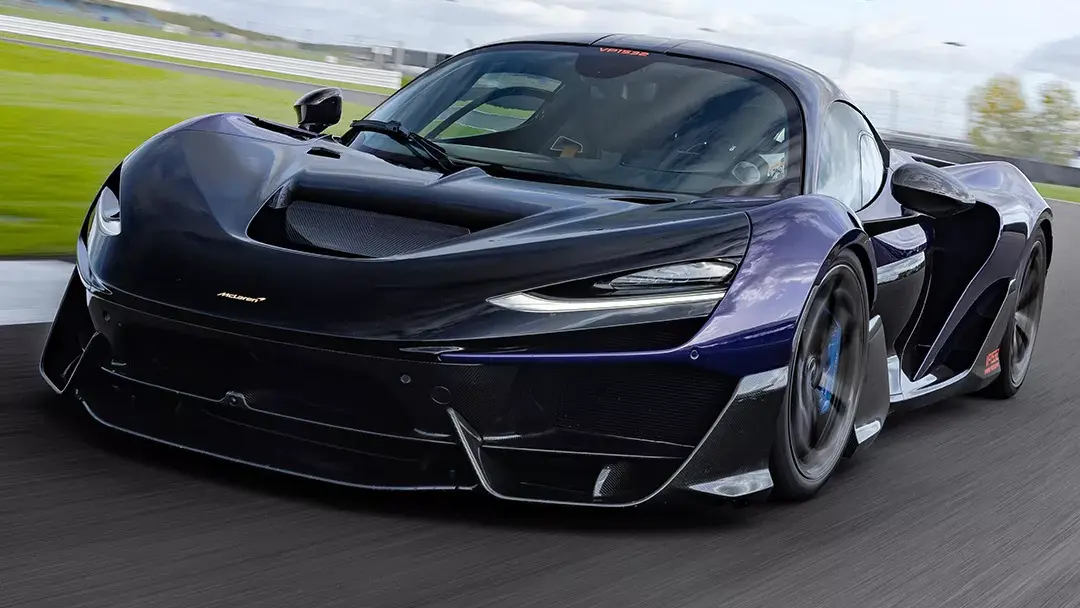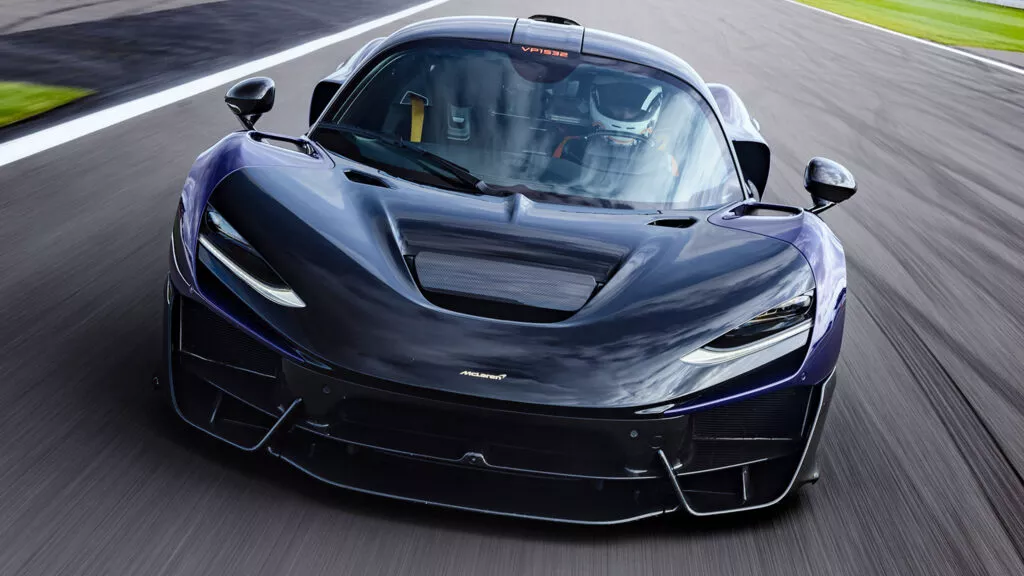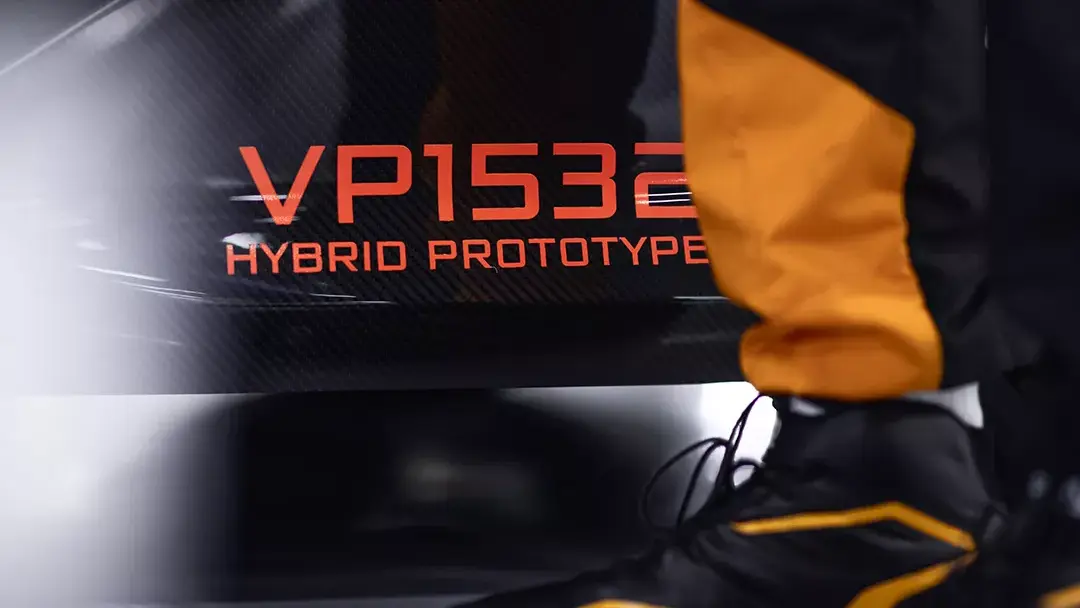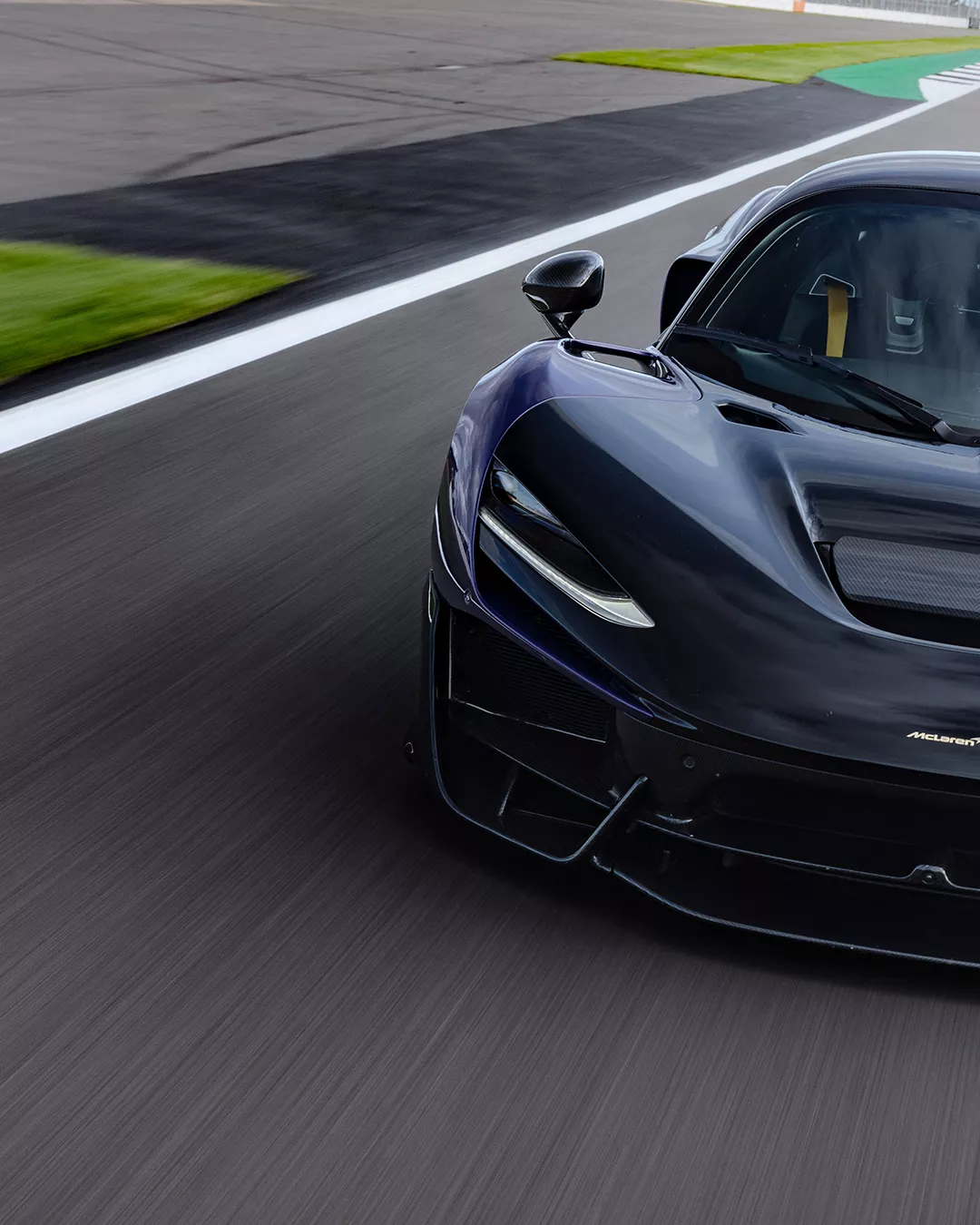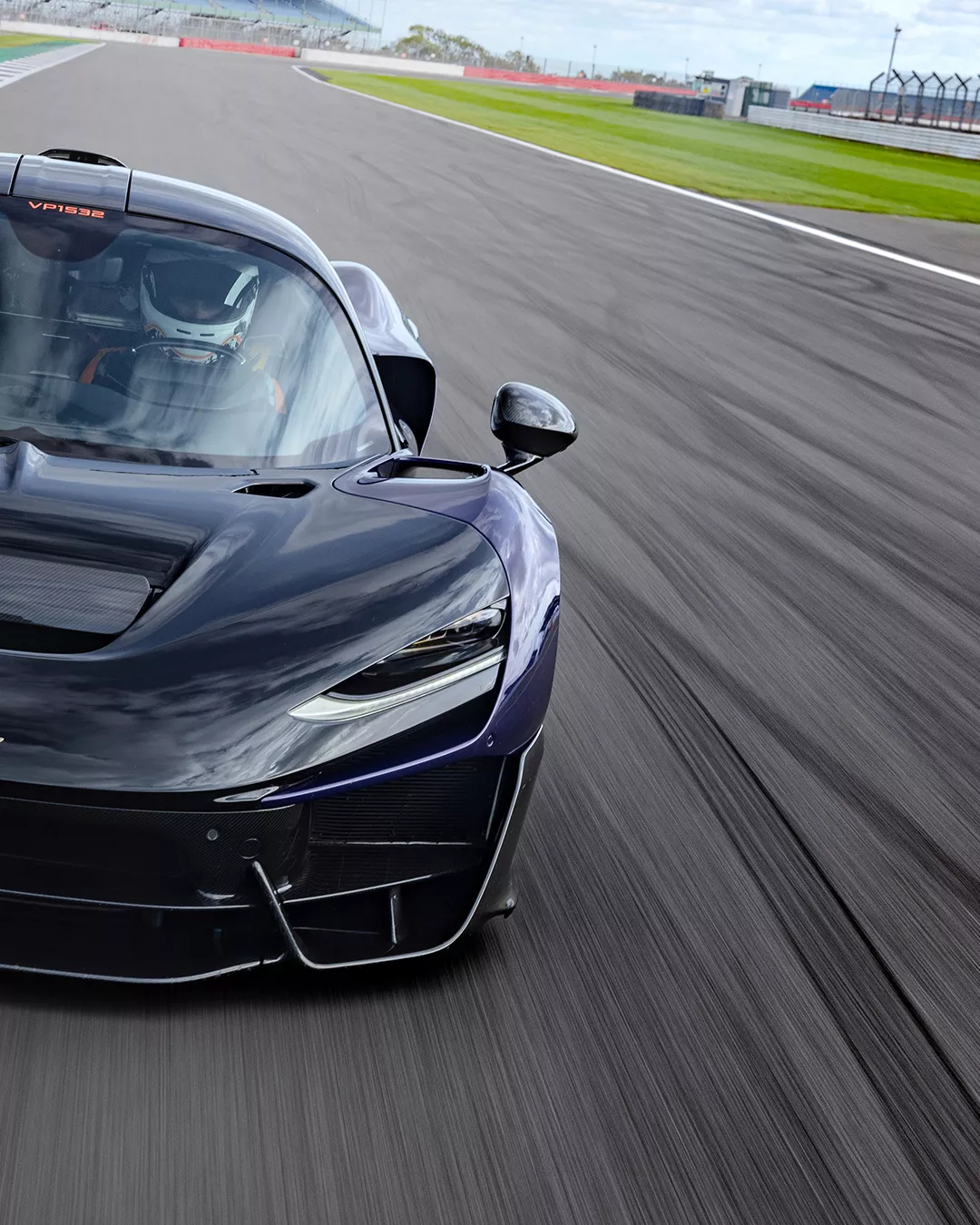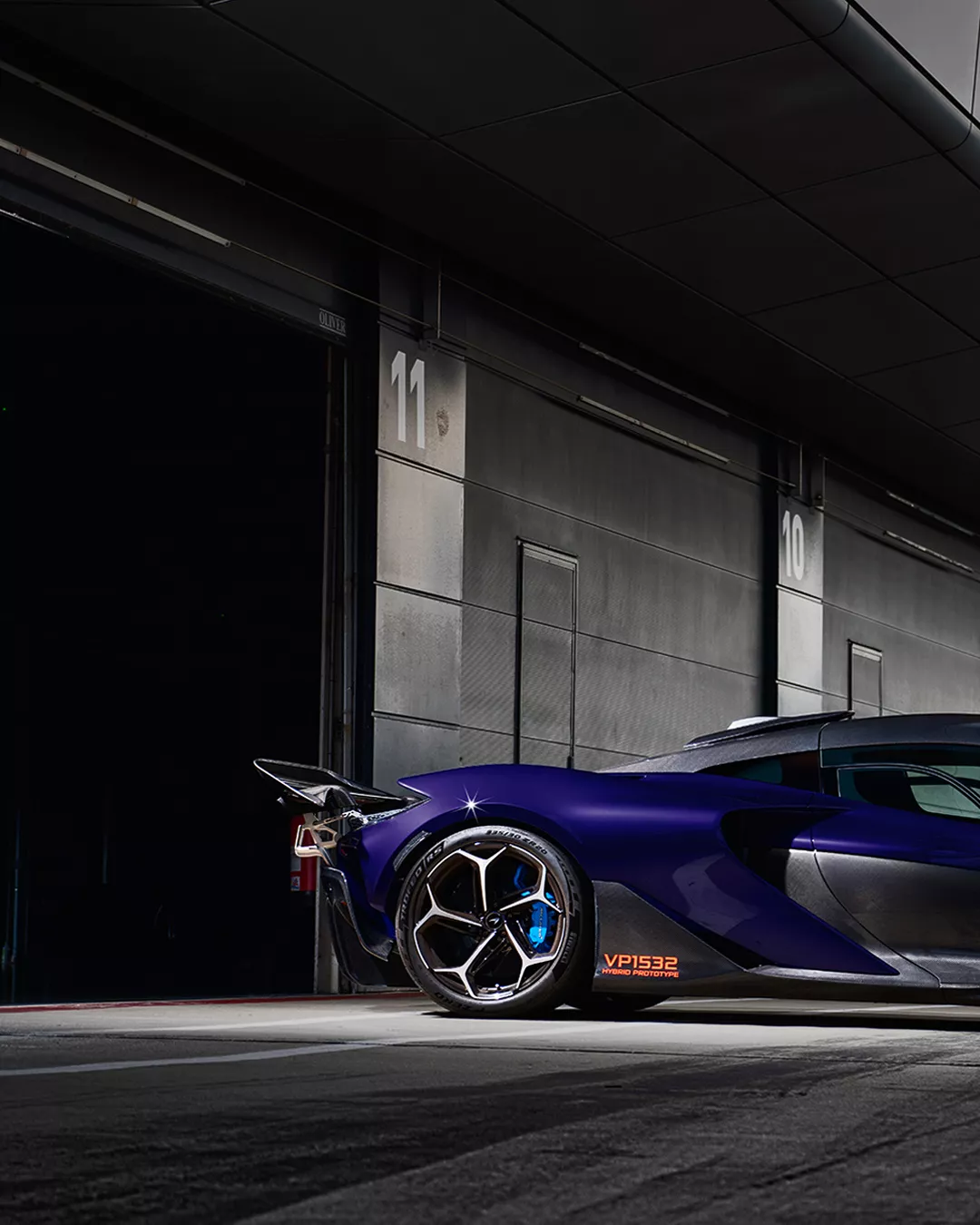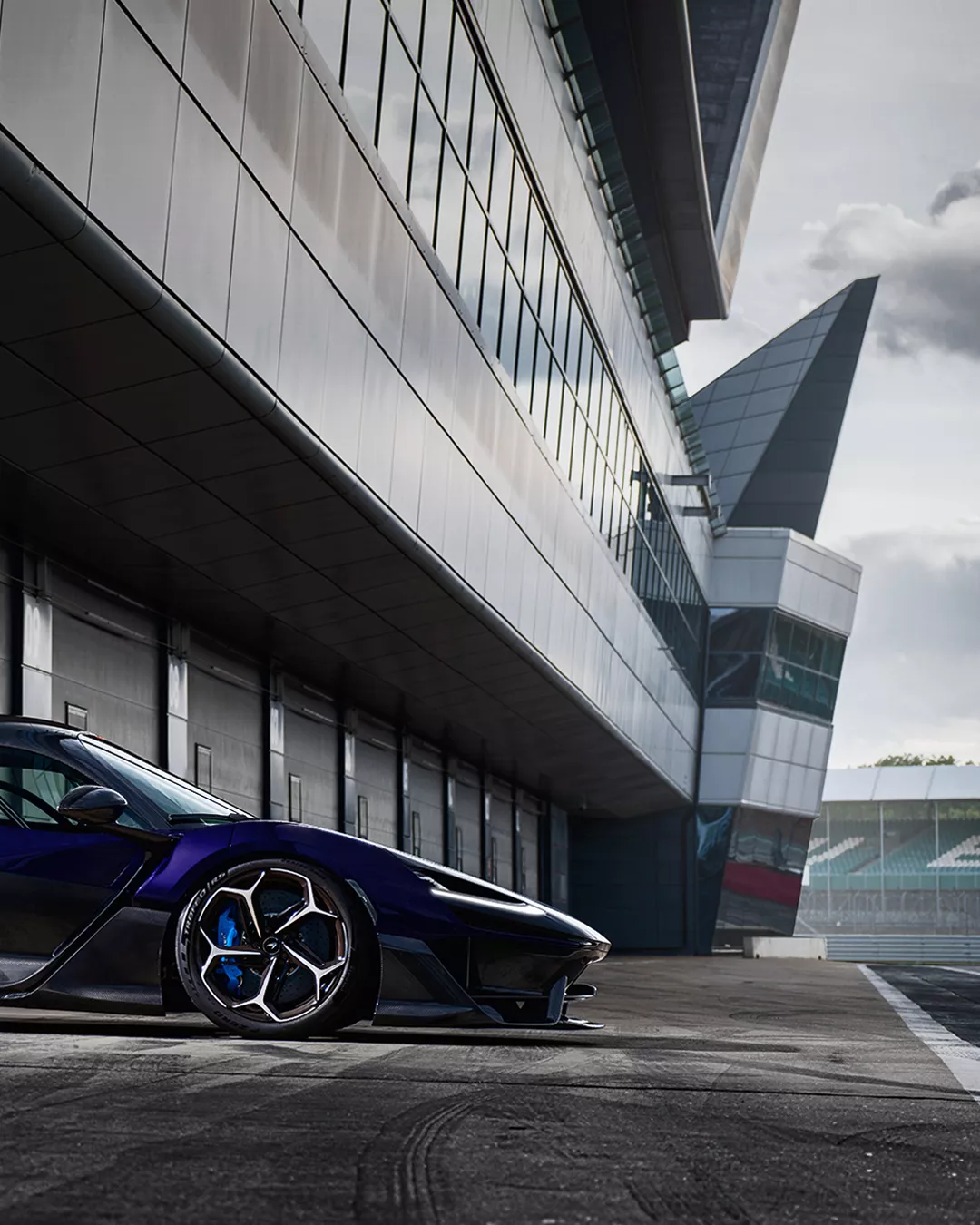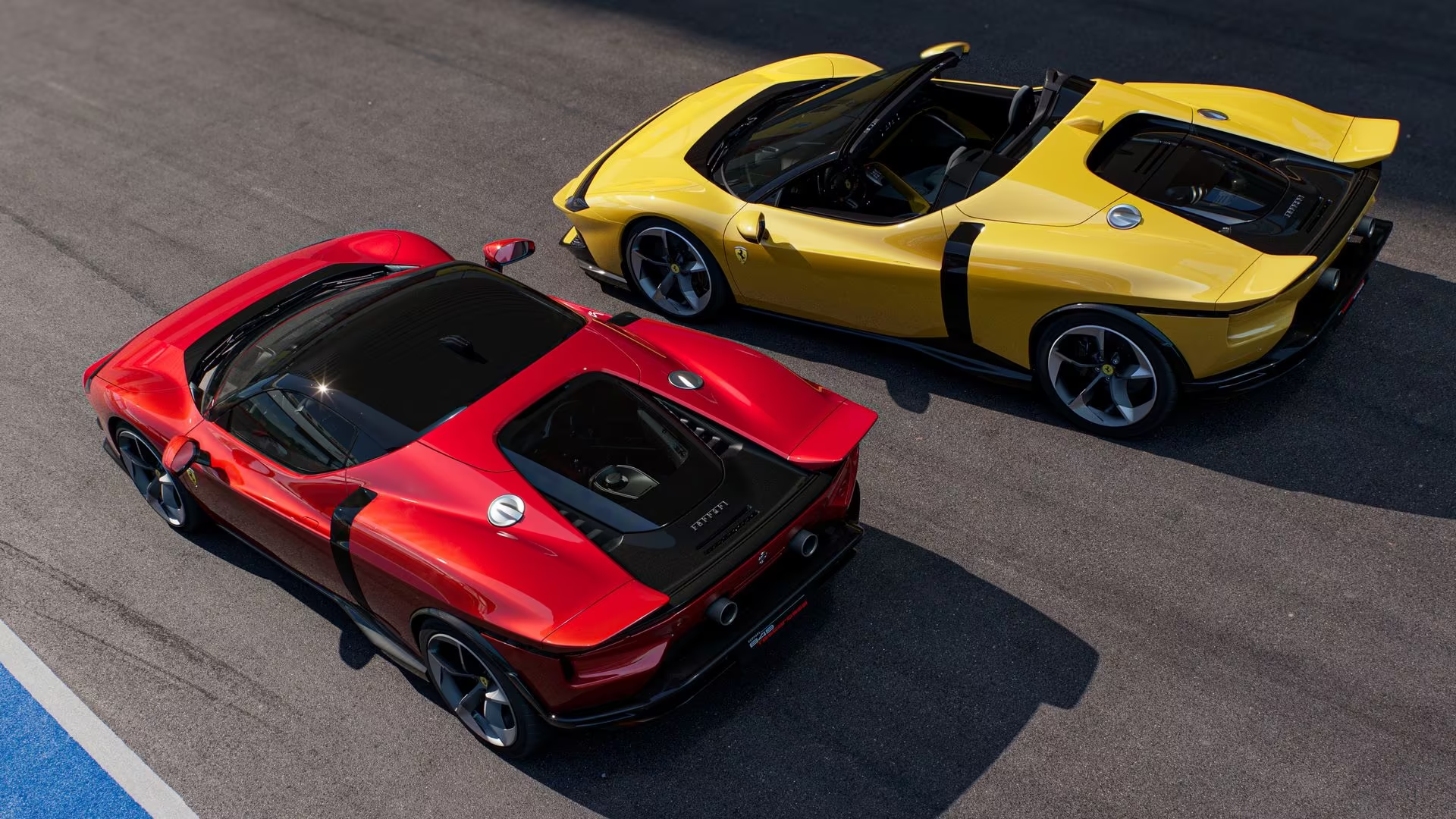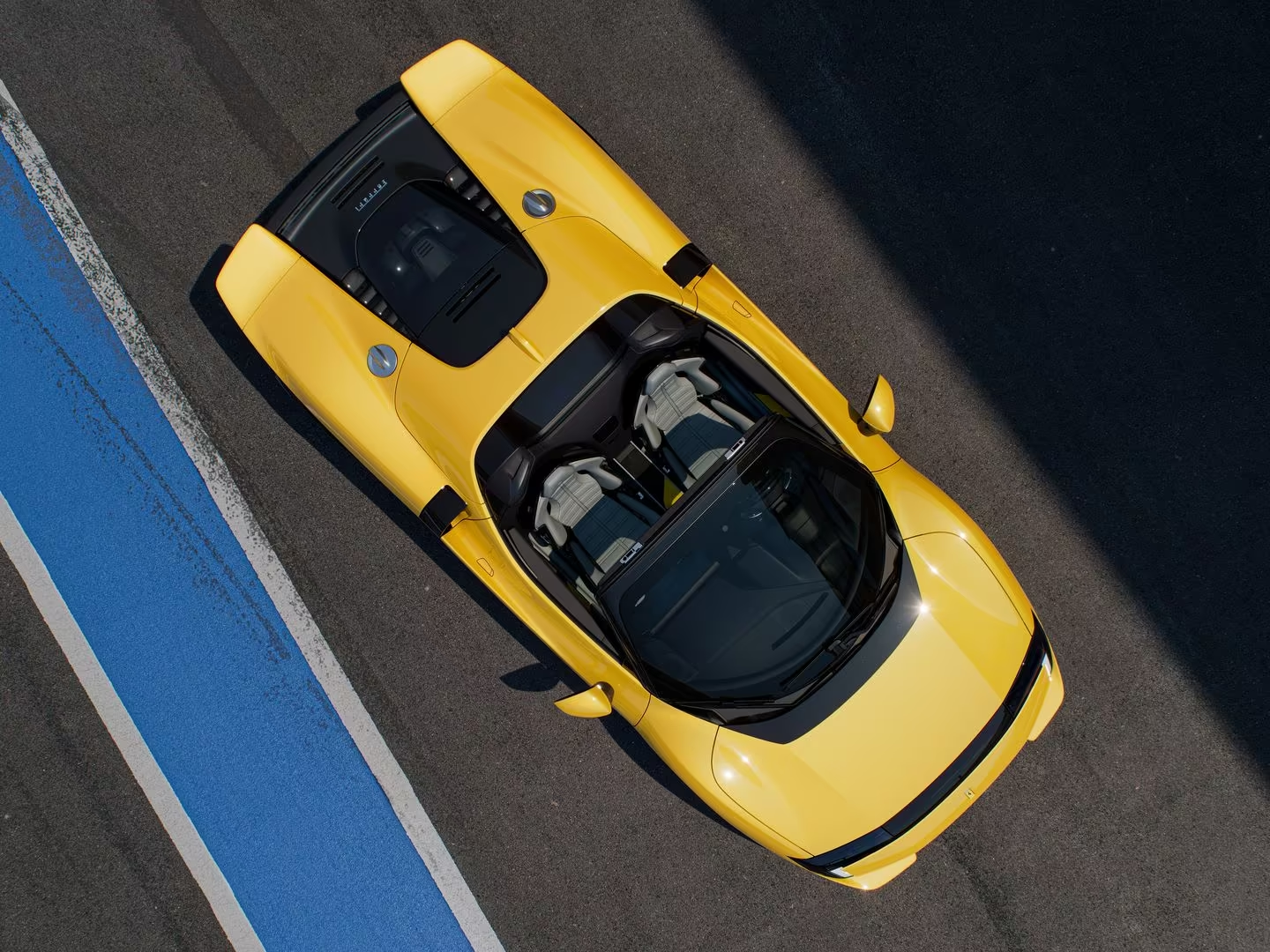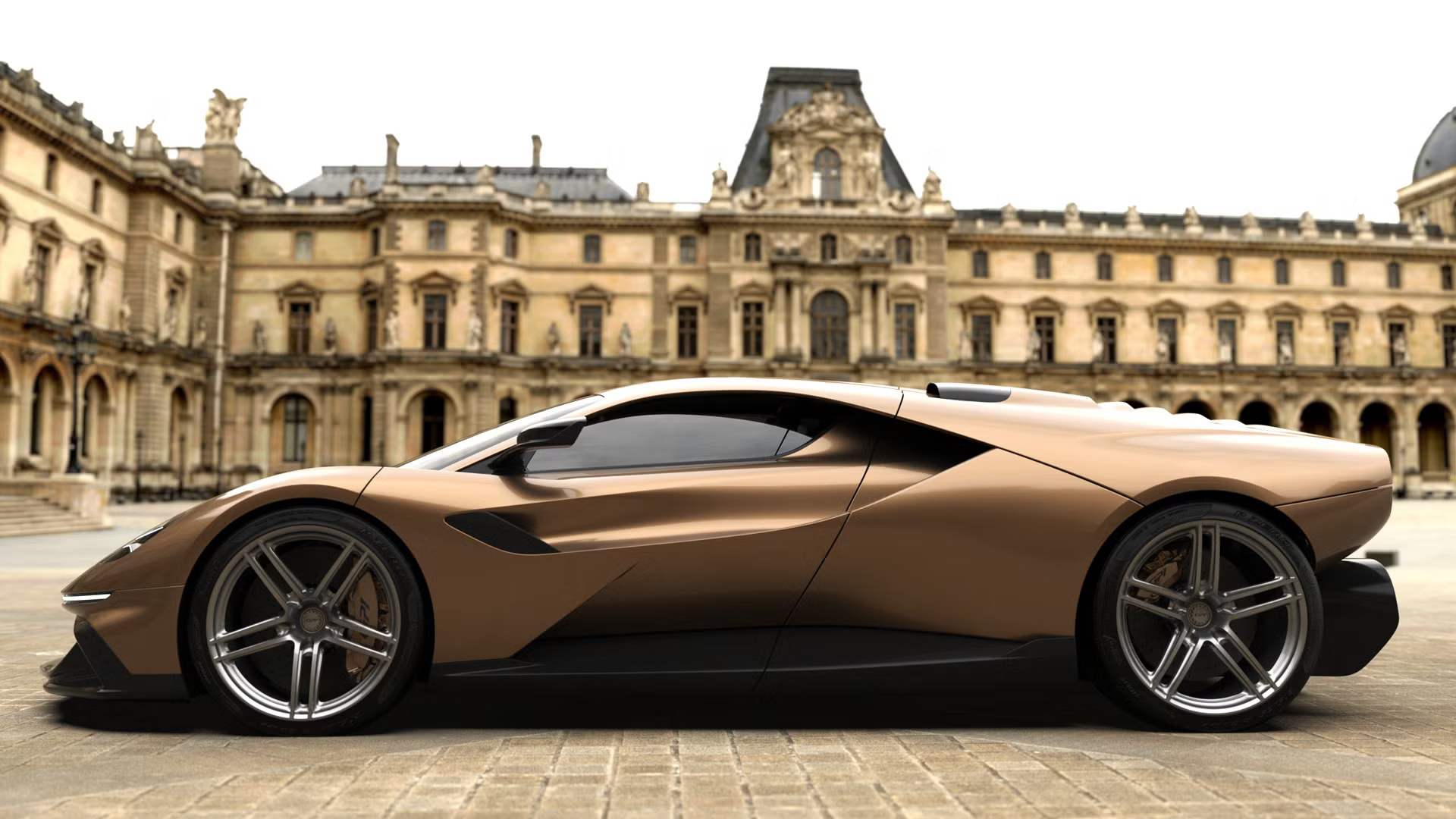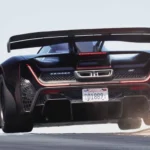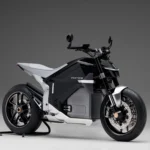Unveiled in concept form earlier this year, McLaren’s 2026 W1 isn’t just a P1 sequel; it’s a defiant middle finger to the all-wheel-drive norm, blending 1,258 hp of hybrid fury with rear-drive purity in a carbon-wrapped missile that’s as functional as it is ferocious. Testing ramps up now (October 2025 shakedowns), with production deliveries eyed for mid-2026 – limited to 399 units at a rumored $2.5M+ a pop. As someone who’s lapped the P1 and wondered “what next?”, this W1 feels like McLaren’s answer: Raw, radical, and ready to humble the Ferrari F80. Let’s dissect the beast from those fresh trackside glimpses.
Design Drama: Polarizing Looks That Prioritize Pure Performance
McLaren’s never shied from bold – the Senna’s bald aggression, the Speedtail’s teardrop – but the W1’s aesthetic split opinions on reveal day: “Too busy” or “brutally beautiful”? Up close at Silverstone, I get it – exposed carbon weaves with dark purple accents and blacked-out vents scream “wind-tunnel warrior,” not showroom stunner. The low-slung coupe (156 inches long, 82 wide) hunkers on 20-inch centers, with a gaping front splitter feeding dive planes and a swan-neck rear wing that generates 1,200 kg downforce at 100 mph (scaling to 2,500 kg at 200).
That massive active wing? It’s the show – telescoping for high-speed stability or low-drag cruises, paired with underbody tunnels for ground-effect grip. Side intakes swallow air for brakes and intercoolers, while the teardrop cabin (1+1 seating, driver-centric) slices drag to 0.29 Cd. It’s less “timeless P1 elegance” and more “functional F1 road car” – polarizing, yes, but engineered for lap records, not Instagram likes. McLaren insiders whisper carbon doors and hood shave 100 kg over aluminum, tipping scales at 1,399 kg dry – lighter than a 720S.
Power Unleashed: 1,258 HP Hybrid V8 That Revs to the Moon
Forget mild-mannered electrification – the W1’s a V8 purist’s fever dream: McLaren’s 4.0L twin-turbo flat-plane crank (M840TR evo) belts 1,008 hp standalone, with a 250 kW e-motor (335 hp) bolted to the crank for seamless 1,258 hp total and 1,340 Nm torque. It’s RWD-only – no crutch AWD here – channeling fury through a seven-speed single-clutch Xtrac box with paddle shifts that snap like gunshots.
Claims? 0-60 mph in 2.7 seconds, 0-124 in under 6, top speed 217 mph (electronically capped; uncorked hits 250). The V8 spins to 11,500 rpm with a symphonic wail – high-pitched fury that builds like a symphony, e-boost filling low-end gaps for catapult launches. A 1.4 kWh lithium pack (rear-mounted) enables 2-mile EV-only bursts and regen that harvests 90% braking energy, but it’s no Taycan – this is combustion-dominant with electric spice. Weight bias? 43/57 front/rear for tail-happy poise, with torque vectoring diffs for planted exits.
Trackside Tease: Silverstone Shakedowns and Global Grind
McLaren’s not easing in – the VP1532 mule’s uncamo’d at Silverstone, tackling Abbey’s kink and Luffield’s curbs to tune aero loads and thermal mapping. It’s the spiritual successor to the P1 GTR’s track focus, but street-legal with GT3-derived dampers (Öhlins, adjustable) and carbon-ceramic Brembos (390mm fronts) that scrub speed without fade. Global tests hit Nürburgring (October Nordschleife assault), Spa (endurance sims), and Monza (top-speed validation) – expect sub-7-minute ‘Ring times, shading the F80’s projected 6:50.
That wing’s the hero – active elements adjust for cornering (up to 60 degrees yaw control) or straights, generating 2x the P1’s downforce without drag penalty. Suspension? Pushrod-actuated multilink with inboard rockers for low unsprung mass, letting the 21C (er, W1) dance where others plow. Brakes glow red under heat, but cooling ducts keep ’em icy – McLaren’s chasing homologation for club tracks post-delivery.
Rivals in the Crosshairs: W1 vs F80, and Why McLaren’s Bet Feels Fresh
The hypercar scrum’s brutal – Ferrari’s F80 (1,200 hp hybrid V6, AWD) looms as the W1’s arch-nemesis, with 0-60 in 2.1 seconds and 217 mph caps. But McLaren’s RWD gamble? It’s the purist’s play – no e-AWD crutches, just driver-car dialogue for slides that thrill, not terrify. Against the Aston Valkyrie’s 1,160 hp V12 (RWD, 2.5-sec 0-60), W1’s hybrid fillips edge efficiency (15 mpg-ish vs Valkyrie’s 10), while Koenigsegg Jesko’s 1,600 hp V8 feels brute-force next to W1’s surgical aero.
The W1 wins on “usable extreme” – P1’s soul with Artura’s smarts, minus the F80’s complexity. At $2.5M (est.), it’s exclusivity incarnate – 399 coupes, with Speedtail-style Mulliner customs.
Why the W1 Matters: McLaren’s Manifesto for the Hypercar’s Next Act
Twelve years post-P1, the W1 isn’t evolution – it’s eruption. McLaren’s blending F1 DNA (that V8’s from the 720S GT3R) with hypercar heresy (RWD at 1,258 hp? Gutsy), proving you can chase records without safety nets. It’s for the driver who wants terror and triumph in equal measure – Silverstone laps that scarify then satisfy, a cabin that’s cockpit-intimate with haptic controls and AR HUD.
This isn’t “just another hypercar”; it’s McLaren saying “we build dreams that bite back.” Delivery’s mid-2026 – who’s lining up? W1 or F80 your pick? Drop the debate below, and if hypercars hook you, peep our Senna GTR track assault. Full send!
